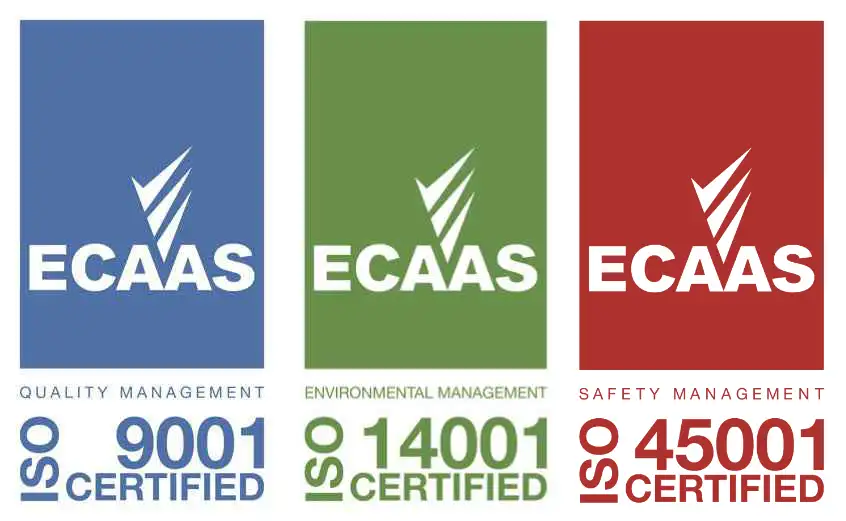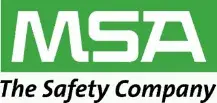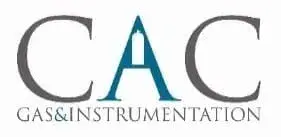Life Before WHS Legislation
What were Australian workplaces like before the introduction of WHS Legislation?
Sometimes we take Work Health Safety legislation for granted. We get caught up with the burden of compliance and we forget about how much safer it is for workers today than it was before the legislation was passed. Here is a collection of stories from people who remember what working life was like a few decades ago…
These comments were originally posted on Linkedin. If you have a story you’d like to share, please contact us
Heavy drinkers operating machinery
I started work with the old PMG (Postmaster General’s Department) back in 1974 and the number of alcoholics or heavy drinkers that operated machinery (e.g. Bulldozers), drove vehicles and entered people’s homes to install phones or fix faults was quite staggering. I can recall having to help hold one very intoxicated person up at the depot when we were about to knock off for the day. This was seen by many to be the expected behaviour at the time if you wanted to be “one of the boys” and there was no understanding of the potential consequences. The introduction of random drug & alcohol testing in many workplaces has made a huge difference to this type of behaviour.
I also recall that the pits installed to house the network cables were made of asbestos and employees would be bashing holes in them to install the pipes or digging broken pits out to replace them. They ended up using safer materials to make the pits but no-one really knows what the impacts may be for those that were exposed. This includes family & friends that may have come in contact with the work overalls of the person working on/in the pits.
Glass is a very unforgiving, brittle and hazardous product. The glass industry (like many others) still has those that employ the “macho” attitude to their work (e.g. The heavier the piece of glass you can lift compared to someone else equates to how much better you are than them; Only sissies wear PPE). As a result, some glass workers see cuts, stitches, even minor amputations as just being part of the job and wear their scars as a badge of honour.
I believe attitudes are changing, people are becoming smarter and more aware of the consequences of their actions and the impacts on those that they hold dear, the people that really matter. They are becoming less self-centred and concerned with how it might look to others that they may work or interact with in the workplace, which is a good thing.
Bruce P Oakley
Third degree burns sustained, while cutting off old bolts
I was personally involved in an incident where a boiler maker and myself were replacing rusted bolts on a tower, we were 30 feet in the air using a boom lift cutting the old bolts out with an oxy, replacing them with new bolts and painting as we went along. We had a small tin of thinners on board at the time to clean the bolts before painting them. some sparks ignited the thinners setting the boom lift control panel on fire. The boilermaker kicked the tin of thinners resulting in his leg catching on fire. he sustained third degree burns to his leg.
Bruce Pennell
Not following procedures almost results in death
One of my ex-employees, and this was circa 1995, was tasked with triple rinsing some Hydrochloric Acid (HCl) drums, removing the labels and marking the triple-rinsed containers with the initials “TR”, for you guessed it, triple rinsed.
The employee was an efficiency expert, that is, he always sought out a quicker and easier way to accomplish his tasks. On this particular day, he decided to print out some stick-on labels displaying the words “Liquid Chlorine” and “TR” so he could just stick his new labels on top of the existing labels. Well, in his mind, this part of the workflow was a success—he didn’t have to remove the old labels, he didn’t have to mark the triple-rinsed containers with the letters “TR” as this was taken care of by his new labels, that was until he forgot which containers he’d actually rinsed.
Instead of starting again, he rolled the dice and decided to fill his new containers with NaClO (the liquid chlorine). He finished filling the first container before moving onto the second, later admitting the first container was bubbling, steaming and had a yellowish gas coming from it, not in a volatile manner, just “different” to what he was used to. This aside, he started on the second container, but the second container had more water left in it from the rinsing process (so he thought), but it wasn’t water, it was HCl.
He never finished filling that container as he was overcome by the yellow gas spewing from the top of the container. In the end, we had to evacuate an area downwind of the new chlorine manufacturing plant, douse him in water for around 30 minutes and clean up the mess with absorbent pads, booms and tox bags.
Suffice to say, he vowed to follow procedure and save his efficiency experiments on less dangerous tasks. Imagine how this could’ve ended? He, we, all of us there on that day, were lucky, very lucky!
Jason Somerville-Kimlin
3 fatalities in Nhulunbuy
You may be able to track some of the unsafe work practices that occurred here in Nhulunbuy, NT while Alcan and then Riotinto have managed the mine and Refinery. Have a look in the NT WorkSafe website. There have been 3 fatalities that really did not need to happen in the last 15 years in the mine and refinery.
Fall from heights from the roof of a silo, fall from heights from an EWP and Line of Fire in the lime plant crusher. Regards Sean
Sean O’Connor
An accident waiting to happen
During a residential school excursion to a panel beating and spray painting business in Rockhampton in 2009 we were asked to do a risk assessment on the business practises.
The paint mixing room was built to standard with a suitable extraction ducted system that worked perfectly. However, the door was wedged open circumventing the extraction system and causing build up fumes. To add to the situation, the resident painter smoked while mixing the paint. Hope you find my experience helpful :) Regards Adrian
Adrian Whelan
1998 style Safety in Canada
This was in Canada before I got to Australia. A friend fell off the side of a building around 2.5 metres high whilst pouring concrete. No safe access. Just 500mm wide 2 metre length timber. No edge protection. When my friend fell he managed to grab hold of some reo. The other guys pulled him back on to the deck and he carried out working.
We were backpackers from the UK. We worked from 7am till 10pm that night and didn’t stop for food. We were only allowed water. Concrete doesn’t wait, was the mantra. This was 1998.
Rob Goodburn
Died in West Gate bridge collapse
My father died from a workplace incident in 1970. The collapse of the West Gate bridge in Melbourne.
William Lund
Heavy drinking at smoko and lunch was the norm
On arrival in Australia, I commenced work with a bricklaying team on domestic and commercial construction projects around inner west , northern beaches and shire works. During this time as a brickies labourer mixing mud and distributing it along with the bricks or blocks on a quickly erected
A frame scaffold was somewhat challenging but it grew on you quite quickly when it rained you did not get paid so you wanted to work rain hail or shine, The best example of the way we threw the mud up the scaffold normally 2 to 4 lifts of A frame scaffold was to stand on top rim of the wheelbarrow feet astride a long handle S size shovel scoop up the mud onto the second level of scaffold plywood then climb onto the same level and pass it up to the next level then distribute it onto the mud boards while keeping the bricks or blocks up to the brickies if that didn’t happen a lot of verbal abuse name calling , mud throwing would occur
That job lasted 3 years it was good at the time working outside with a group of German and English brickies who liked to drink as soon as they finished work normally until the pub closed they never ceased to amaze me how they could lay the bricks just as good when they had 1/2 a dozen schooners of reschs pilsener under their belt.
I them saw the light gaining employment with State Rail as a flagman our training was pretty tough at the time coming from working with a bricklaying team to working with nationalities from all over the world sometimes it made me wonder as the job we were doing was very high risk with trains whizzing past you at high speed yet some of the gang I was placed with drank a fair bit of Raki , grappa , ouza homemade wine during smoko and lunch on a daily basis but it never seemed to faze them they all worked the same as before even better – no one seemed to get injured.
They just seemed to suffer from the onset of gout the next day also there faces seemed to light up with the red tinge, as the years went on the changes to workplace safety was quite noticeable with the random drug and alcohol testing on sites even when doing night works 1or 2 o’clock in the morning in the City underground.
full drug and alcohol screening for new employees and during employment , the times were starting to change I was along for the ride training was really starting to ramp up for the PW31 and Protection Officer level 1 and 2 these tickets were dependant on passing the training and regular drug and alcohol testing which was compulsory for all (the names of the company changed many times while working) for SRA – MCE West, State Rail, Rail Services , Rail Access Corp and their Contractors.
Safety changes over the years have meant workers and companies needed to adapt the way they worked although I did not see a lot of injuries even when the guys were quite pissed , the major change to the paperwork with JSA , Safework method statement, and the risk assessment has made it more difficult for the workers to do their job until the company , not the worker completed a SWMS that may or may not be what the workers are actually doing reams of paper are pointless – let the workers write their own.
William Barnett
No protection in the good old days - but no politics either!
When I was old enough to drive a tractor I was the monkey who drove the tractor while my brothers sprayed the fruit trees with DDT. There was no protection and we were often covered in chemical solution.
When we sent truckloads of cased fruit to Fremantle for export I was up on top of the load rolling out the tarpaulin. There was no fall protection. Come to think of it, we never wore hearing protection while operating machines, there was no training when operating secateurs for pruning; you learned about risks by losing fingers.
No one taught us about the ease by which you could roll a tractor on top of yourself and no one gave us any training in using weapons when we went to shoot parrots or kangaroos. We pretty much learned as we went. Most of us survived but some didn’t.
I spent 15 years working as a safety professional and became so disillusioned with the politics and bureaucratic nature of safety in the modern workplace, I think I would take my chances with working like we did in the good old days.
Christopher Giumelli
We’d include expected fatalities for the job when tendering
When I first started work back in 1970, safety at work was not a priority and certainly was not regulated to the extent that we see today. I remember distinctly that working at heights was something that most construction workers did and without the use of any fall restraint equipment. Strange thing is that back then not many people we’re known to have fallen from high-rise construction or mining and resources construction projects.
I also remember that when tendering for these types of projects it was not uncommon to have to include the expected number of fatalities that might occur based on the nature of the work.
We often see photographs of workers on Construction projects back in the old days when walking steel and riding the crane hook was part of the everyday job for crane chasers, riggers, steelworkers, boilermakers and riveters.
We may scoff at these past work practices but in reality, how much has really changed over the years even with the increase in legislation, technology, safety management systems, safe work method statements and constant oversight by active safety officers. Falls from heights are still considered one of the major contributors to the high accident rates still being seen today.
Is this because “in the old days” training for those jobs mentioned above took several years and under the supervision of experienced people unlike today where simple online courses or fast track training can give you the same qualification without the experience or the oversight.
To this day I can walk around any housing construction site and I will see people working on roofs without fall protection, without guard railing, without lifelines or wearing harnesses. As a dyed in the wool safety professional I make it a point to yell at these guys whenever I come across them and abuse them for their lack of concern for themselves or their families. The torrent of abuse I get back is something I’m used to and some of the names I’ve been called, I would have been proud to have thought of.
Over the 48 years of my work experience, the last 20 being devoted to the safety profession, I have seen the transition from allowing experienced workers to think for themselves and to do what they are paid to do to a point where every task is so heavily regulated and buried in bureaucracy that the worker is more concerned about having the paperwork completed and all the checklists ticked off that the actual function of the task is secondary. This effectively means that the worker is more concerned in ensuring that all the systems in place to prevent a company from being fined by a regulator and thereby taking away the focus on hazard identification and prevention.
A good example is the evolution of the JSA from a simple document handwritten by the workers doing the task to the current safe work method statements (SWMS) that have included so many requirements that the documents are basically useless to the frontline worker and again serve primarily to absolve the company from any litigation in the event on a serious accident or fatality (i.e. worker failed to identify…). I once had to develop a 160 Page safe work method statement for the use of a scissor lift that was built to European standards and because such a piece of equipment had not been used before by the principal contractor even though it was common practice to use this equipment around the world and for the job it was designed to do.
In the last 10 years I have heard the statement “you have that clipboard you tell me how to do the job” more times than I care to remember.
I could go on but I think that this is sufficient for my first response.
Gunther Gahleitner
Why weren’t there more deaths?
Before it, what about during it! The best story before would be the building of the Sydney Harbour Bridge, deaths were expected due to the complexity and risk of such a project.
The project took 8 years and 16 deaths occurred, only 2 of those deaths were contributed to falls. Think about that for a moment, 1400 men over 8 years and only 16 deaths, 2 fell which was one of the greatest risk during the 8 years. No safety systems, no fall protection?
In 2013 safework Australia published a report on workplace fatalities resulting from a fall from height. From the period 2003 to 2011 (8 years) 232 people were killed in the workplace from a fall from height
. Whilst I admit this is multiple workplaces, with varying risk and complexity, they had all the systems, legislation you ask about. A more thought provoking subject would be asking WHY? No systems, no legislation 2 deaths, with everything 232 deaths?
Scott Laurie
Our Certifications





Authorised & Certified Service Centre for













